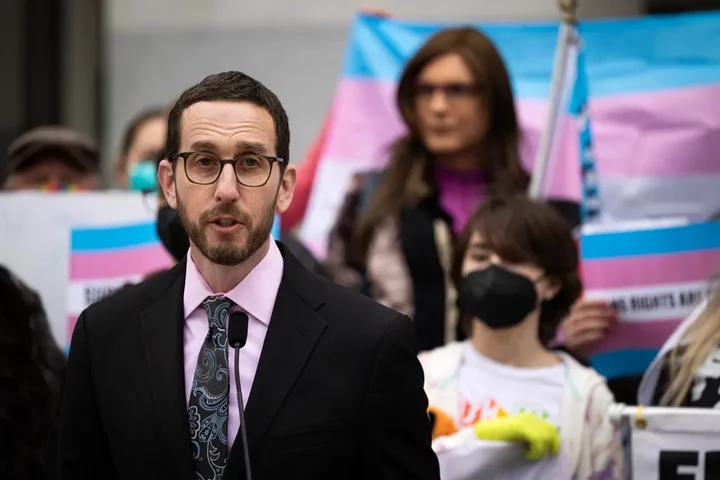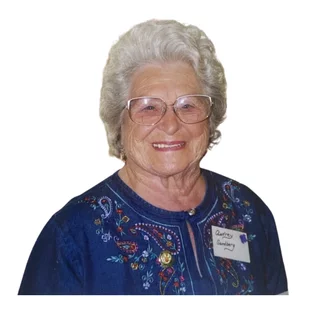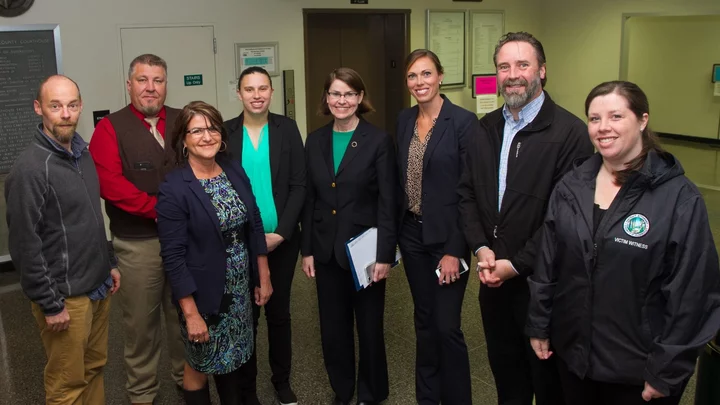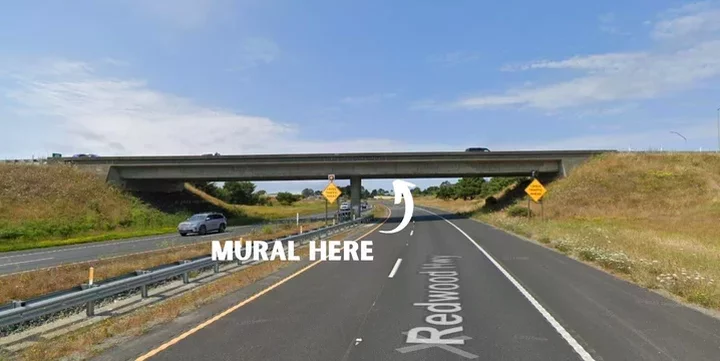My House or My Beach? Why California’s Housing Crisis Threatens Its Powerful Coastal Commission
Ben Christopher / Thursday, July 6, 2023 @ 7:13 a.m. / Sacramento
California lawmakers have been busy over the last decade trying to make it easier to build homes across a housing-strapped state. But there’s an 840-mile-long exception.
In an undulating band that generally runs 1,000 yards from the shoreline, the 12 members of the California Coastal Commission have the final say over what gets built, where and how.
Voters empowered the commission to protect the state’s iconic beaches in 1972, responding to a crisis of despoiled seas and the prospect of the Miami-fication of the California coast.
But five decades later, the state faces a different crisis as millions of Californians struggle to find an affordable place to call home. Now, a growing number of legislators and housing advocates are trying to wrest away some of the commission’s power.
Legislation by San Francisco Democratic Sen. Scott Wiener would fast-track apartment development in parts of the state that haven’t met their state-set housing goals, exempting them from lengthy public hearings and environmental legal challenges. The coast is no exception, effectively cutting the Coastal Commission out of the process.
Commission members, staff and environmental advocates say the bill may be the most direct assault yet at the agency’s voter-backed mandate.
“Once you start exempting classes of development from the Coastal Act there will be no shutting that barn door,” said Sarah Christie, a lobbyist for the commission. “You’re going to lose some of the best things about California.”
And as rising seas threaten to bring down bluffs and flood beachfront neighborhoods, coastal advocates argue that carefully considered development is more important than ever.
Wiener and his allies reject the argument that the commission is the only thing standing in the way of a development free-for-all, since current zoning rules and environmental protection laws would still apply. Ending what has become the regular practice of exempting the coast from California’s most aggressive pro-housing development laws is also fair, they argue. California’s beachfront happens to be home to some of the state’s richest residents.
“The coastal zone is much whiter and wealthier than the rest of the state,” Wiener noted at a recent Assembly committee hearing. “The idea we would be applying state housing law inland…while we literally exempt whiter, wealthier coastal communities is offensive to me.”
Wiener said he plans to introduce tweaks to the bill before its next hearing on July 10 in an effort to “compromise” with the commission. But the two sides remain far apart.
“The idea we would be applying state housing law inland…while we literally exempt whiter, wealthier coastal communities is offensive to me.”
— State Sen. Scott Wiener, Democrat from San Francisco
The tension between the state’s aggressive housing goals and its longstanding commitment to coastal preservation is particularly acute in Southern California, where the latest round of state housing goals shifted the bulk of the region’s planned growth from inland communities — the traditional, sprawling outlets for pent up housing demand — to coastal ones. That includes cities like Santa Monica, Malibu, Los Angeles, Encinitas and San Diego, all of which fall at least in part, if not entirely, within the coastal zone.
“If you have the Coastal Commission, with their ‘less is more’ mindset saying, ‘no, you can’t build here’…how are cities even supposed to attempt to achieve meeting that (housing) goal?” said Elizabeth Hansburg, executive director of People For Housing, a pro-housing advocacy group in Orange County.
Christopher Pederson, who served as chief counsel for the commission before retiring in 2018, said it’s possible for the state to build up the coast while maintaining “really strong protections” in undeveloped coastal land and for delicate ecosystems. In fact, he said, if the alternative to building in dense coastal cities is encouraging car-oriented sprawl in the exurbs, the two goals may necessarily go hand in hand.
“From an environmental perspective, from a climate policy perspective, from a housing perspective and from a transportation perspective, I think it makes a lot of sense to encourage more multifamily housing in the coastal zone,” said Pederson.
Will the Coastal Commission hold the line?
This isn’t the first time the Legislature has taken a crack at the Coastal Commission’s authority. It’s not even the first time this year.
San Diego Assemblymember David Alvarez, a Democrat, introduced a bill in February that would encourage developers to set aside units for lower income residents by allowing them to build higher and denser projects. The bill builds on past “density bonus” policies that have made their way through the Legislature. But unlike its predecessors — and unlike some of the most significant housing bills in recent years, including one that allows the construction of duplexes in areas zoned for single family homes across the state — Alvarez’s bill explicitly went out of its way to include the coastal zone.
Then, in April, the bill reached the Assembly Natural Resources Committee and a coastal exception was added back in.
Chair Luz Rivas of Arleta, and other Democrats including Gail Pellerin of Santa Cruz and Dawn Addis of San Luis Obispo, made clear at the hearing that overriding the commission was a no-go.
Alvarez accepted the change rather than see his bill die. But he was visibly frustrated.
“I heard a statement that coastal access is important and that people should have the opportunity to visit the coast,” he said, referring to one of the commission’s key mandates to keep California beaches open to the public. “People should also have the opportunity to live on the coast, not just visit the coast.”
“The ocean is coming”
So far Wiener’s bill has not met the same fate, though it goes before the same committee later this month. His bill also, arguably, represents a bigger challenge to the commission’s authority.
In most of the state’s cities and counties, proposed multiplexes and apartment projects are allowed to skirt lengthy public approval processes. Instead they get automatic approval as long as they check the right boxes — among them, offering a certain share of units at below-market rents or prices and abiding by stricter labor standards.
But the Coastal Commission doesn’t do box checking.
Along much of the coast, the commission has to approve city growth and zoning plans. In neighborhoods especially close to the water, foes of proposed developments can appeal directly to the commission.
And in cities that haven’t come up with their own coastal protection plans, which includes about a quarter of coastal cities including Los Angeles, the Coastal Commission enforces the law alone, armed only with the Coastal Act. And the act itself is fairly light on specifics.
That’s for good reason, said Christie, the commission lobbyist.
Ensuring that a proposed development is built “far enough away from an eroding bluff that it’s not going to fall into the ocean in 20 years, there is no objective standard that can speak to that complexity,” she said.
“It’s going to be a managed retreat or an unmanaged retreat because the ocean is coming and nature bats last.”
— Sarah Christie, lobbyist for the Coastal Commission
Climate change and rising sea levels add yet another level of complexity and another reason not to rush development, she added.
“The last thing that California should be doing is concentrating more new development in these hazardous flood-prone areas,” she said. “It’s going to be a managed retreat or an unmanaged retreat because the ocean is coming and nature bats last.”
That view is shared by all 12 members of the commission, who are appointed by the governor or the Legislature.
“We take a lot of time and effort in evaluating each and every project that comes before us,” said Commissioner Dayna Bochco during a June 7 hearing. “You can’t just make a mathematical formula as to what works in any given project on the coast.”
The commission voted unanimously to oppose Wiener’s bill.
Must fit plans for California coast
The bill does include its own set of checks on which projects get the red-carpet treatment and which get closer review.
In order to receive the fast-tracked approval process, the land in question already has to be zoned by local governments for housing. A proposed building has to have pre-existing “urban” development on at least three of its four sides.
According to estimates put together by California YIMBY, a pro-housing development organization that supports the bill, of the nearly 1.5 million acres within the coastal zone, the bill would allow for streamlined development on just 277,160 acres. The vast majority of the land — wetlands, floodplains, beaches and river channels — either are explicitly exempted from the bill or aren’t zoned for housing by locals.
“Approximately 85% of the Coastal Zone is already excluded from the bill. The remaining 15% are existing urbanized, developed communities,” Wiener said in a written statement. He added that the state “can’t afford to continue excluding these areas if we are to meet our climate goals — the lack of housing in coastal zones these exclusions produce already means coastal workers have to drive 10% more on average than their inland counterparts.”
Senator Scott Wiener, D-San Francisco, announces legislation to provide refuge to out-of-state transgender kids and their parents at the Capitol on March 17, 2022. Photo by Miguel Gutierrez Jr., CalMatters.
Wiener and his allies also reject the idea that proper planning for rising oceans requires detailed, site-by-site analysis. The senator’s office pointed to voluntary planning guidelines produced by the San Francisco Bay Conservation and Development Commission and San Mateo County Flood Control District. The San Mateo County planning document builds on nationwide flood risk mapping from the Federal Emergency Management Agency.
Though his office has yet to provide details, Wiener said his proposed compromise language to the Coastal Commission includes preserving the current discretionary review process for the most at-risk slivers of the coast and adding specific “objective development standards” around rising sea levels.
Not that anyone can say with certainty how much shore the sea is likely to swallow across the entire coast in the coming decades.
“Everybody admits that it’s not a hard science, it’s probabilities,” said Joseph Smith, a land-use consultant for California Coastal Works who advises developers and governments navigating the Coastal Act. “But if it is absolutely important to get housing into the coastal zone, then yes, you could pick a number.”
Building a California coast for all
The commission and its defenders say pro-housing advocates and legislators are picking on the wrong enemy.
For the first decade of its life, the Coastal Commission was empowered to make the construction of affordable housing a condition of its approval of residential projects. In 1981, the Legislature took that power away over the commission’s objections.
Revoking that power will “make sure that the ability to live near the coast is reserved for the wealthy,” then-Chairman Lenard Grote warned at a legislative hearing at the time.
Susan Jordan, founder of the nonprofit California Coastal Protection Network, is a familiar face at the state’s public hearings, where she regularly challenges oceanside projects for violations of the Coastal Act. A recent win: the Poseidon Water desalination project in Huntington Beach, which the Coastal Commission rejected last year.
“The Legislature ‘broke’ it and now it needs to ‘fix’ it,” Jordan said in a statement.
The commission’s supporters regularly stress that it has never rejected a proposed affordable housing project.
But for many developers — including those who build deed-restricted units for lower-income residents — the possibility of years of delay with no certain outcome has created a “chilling effect,” said Jeannette Temple, a San Diego land use consultant.
“If you’re an affordable housing developer, you’re already operating on the margins, so most of the time my clients, and people my clients know, don’t even look in the coastal zone,” she said. “In my opinion it’s just another kind of redlining.”
###
CalMatters.org is a nonprofit, nonpartisan media venture explaining California policies and politics.
BOOKED
Today: 6 felonies, 7 misdemeanors, 0 infractions
JUDGED
Humboldt County Superior Court Calendar: Today
CHP REPORTS
No current incidents
ELSEWHERE
Governor’s Office: Governor Newsom announces appointments 1.13.2026
County of Humboldt Meetings: Humboldt County Behavioral Health Board Meeting - Jan. 22, 2025
OBITUARY: Audrey Mary Campbell Sandberg 1918-2023
LoCO Staff / Thursday, July 6, 2023 @ 6:56 a.m. / Obits
Audrey Mary Campbell Sandberg
November 2, 1918 - June 24, 2023
Audrey Sandberg was born November 2, 1918, in Weaverville and grew up in Trinity County. She passed away at home with her family by her side on June 24, 2023, in Eureka, at the age of 104.
Audrey attended Fortuna High School, graduating with the Class of 1936. She married Kenneth W. Sandberg in 1940 and they were blessed with two daughters, Lynette Sandberg Sheldrake and Ava Sandberg Vizenor.
Audrey was a self-described stay-at-home mom who was active in her daughters’ school PTA at Lincoln Elementary. She served as a Blue Bird Troop Leader and helped in the school cafeteria. She then went to work outside the home, and held various jobs over the years, including cooking for Eureka City Schools, and working for Kennedy’s Office Supply, Warren Starkey & Gray Insurance, and Redwood Drugstore.
Throughout her life, Audrey was actively involved in the local community. Among her accomplishments were life memberships in California State PTA and Eureka Sequoia Garden Club, of which she was a 50-year plus member and past president. She was an honorary member of the Eureka Women’s Club. Other organizations that Audrey belonged to include the Eureka Heritage Society, Humboldt County Historical Society, Society of Humboldt County Pioneers, and Redwood Coast Village.
Audrey was a contributing editor to the Humboldt Historian, Spring 2021 Issue, authoring an article about life in the town of Bridgeville in the 1920s.
Audrey was an avid bird watcher and card player, enjoying her twice-weekly card games with friends at Eureka Women’s Club. She enjoyed singing in a women’s choral group, which was led by Pearl Micheli. Audrey loved flowers, her favorite being yellow roses, which her daughter Lynette has chosen for her mother’s memorial bouquet.
In recognition of reaching her 102nd birthday in November 2020, Audrey received a special proclamation from First District Supervisor Rex Bohn and the Humboldt County Board of Supervisors.
Audrey is survived by her daughter Lynette and son-in-law Tom Sheldrake of Eureka, six grandsons: Christopher, Kyle, and Erik (Brandee) Sheldrake, Todd, Troy (Nancy), and Craig (Marci) Vizenor. She also leaves behind eight great-grandsons, three great-granddaughters, andnumerous great-nephews and nieces. Audrey was preceded in death by her husband Kenneth and her daughter, Ava Vizenor.
The family would like to express their appreciation to Becky Tanenhaus, for her kindness and gentle care, and to Hospice of Humboldt for their care of Audrey during her last months.
The community is invited to a Celebration of Life to honor Audrey’s memory on Saturday, July 8, 2023, at 1 p.m., at the First Presbyterian Church, 819 15th Street, Eureka. Guests are asked to enter from the J Street parking lot.
Memorial donations in Audrey Sandberg’s name may be made to Hospice of Humboldt or to the charity of your choice.
###
The obituary above was submitted on behalf of Audrey Sandberg’s loved ones. The Lost Coast Outpost runs obituaries of Humboldt County residents at no charge. See guidelines here. Email news@lostcoastoutpost.com.
OBITUARY: Patricia J. Jackson, 1957-2023
LoCO Staff / Thursday, July 6, 2023 @ 6:56 a.m. / Obits
We
are sad to announce the passing of Patricia Joanne Jackson of Eureka. She died at age 65 at Providence St. Joseph Hospital on
June 2, 2023. Patty passed away with her family by her side after a
courageous two-year battle with ALS.
She was born in Roseville to Clarence and Virginia (Sewell) States on June 11, 1957. She grew up in Sheridan and went to Lincoln high school. As an adult, she lived in Burnt Ranch for many years before moving to Eureka. She worked at the Eureka City Schools’ central kitchen and later at the Eureka High School cafeteria, a job she dearly loved because of her fondness for children. Cooking and gardening were her main hobbies. She was an amazing cook and made almost everything from scratch. She had a green thumb and her garden always showed it.
She was married to Jerry Jackson on December 21, 2011. It was each of their third marriage. It was Patty’s beautiful smile that melted Jerry’s heart. She was beautiful, inside and out.
One day before they were married, Jerry was eating some cookies that Patty had made from scratch and remarked, “Boy, these cookies are the best I’ve ever had. What are they called? She replied, “I Want to Marry You cookies.” Jerry responded, “You’re kidding. You have to be making that up.” “Nope, that’s their real name.” “Yes, I can see why.” As the old saying goes, the way to a man’s heart is through his stomach.” Jerry later proposed to Patty while they were waltzing at the Elks.
Patty was preceded in death by her parents. She leaves behind her husband Jerry, three brothers, Harold, Steven, and Danny, four children, Denise Crouch (John), Tina Collins (Tim), Derek McIntosh (Julie), Loreesa Roberts (Cameron), and seven grandchildren, Hannah, Khristina, Isaac, Claire, Brea, Cora, and Holden. Shortly before she passed, she found out she would be a great-grandma and have another grandchild.
At Patty’s request, there will be no memorial.
If you want to donate in her memory, go to als.net and click on “Donate Now” at the top of their webpage.
###
The obituary above was submitted on behalf of Patricia Jackson’s loved ones. The Lost Coast Outpost runs obituaries of Humboldt County residents at no charge. See guidelines here. Email news@lostcoastoutpost.com.
POLL! You Told Eureka, Now Tell Us — Which of Those Herrick Overpass Murals is the Best?
LoCO Staff / Wednesday, July 5, 2023 @ 4:55 p.m. / POLLZ
PREVIOUSLY:
So y’all have done your civic duty by telling the City of Eureka which of the three proposed designs for the Herrick Overpass mural you prefer, right? If you haven’t go do that here right now.
Now that you’ve done it, tell LoCO, via the poll below. Which one is the best?
To review: Here are those murals again.
“Guardians of the Salt Marsh” by Honeybrush
“Eureka Rising” by Lucas Thornton
Now — which one is best?
Humboldt County’s Child Abuse Services Team Works Hard But Suffers From Understaffing and Could Use Some More Training, Civil Grand Jury Finds
Ryan Burns / Wednesday, July 5, 2023 @ 3:27 p.m. / Courts
A previous iteration of the Humboldt County Child Abuse Services Team (CAST), from 2017, accepted an award from the Humboldt County Board of Supervisors honoring 21 years of service to local children. | Photo via Facebook.
###
This afternoon the Humboldt County Civil Grand Jury dropped its seventh report from the 2022-23 session. This one reports on an investigation into the county’s Child Abuse Services Team, or CAST.
In a press release, published below, the Civil Grand Jury has some nice things to say, noting the importance of the work done by CAST personnel and tipping a cap to the “dedicated, hard-working professionals” in the team and noting that the system functions well “for the most part.”
Naturally, some things could stand improvement. Front-line responders to child abuse situations could use more — and more current — training, the report says. And the understaffing that currently plagues the whole county naturally affects CAST as well.
The report, which you can download in full via a link below, lists seven recommendations. Among them is one stating that the District Attorney’s Office should lead the development of training for first responders in “culturally appropriate best practices” to situations of alleged child abuse.
All law enforcement agencies in the county should receive such training, the report notes.
Below is a press release from the Humboldt County Civil Grand Jury, followed by a link to the full report:
Children are the most vulnerable members of our society. When they are subjected to abuse, be it sexual, physical, or emotional, there is a team who come from a variety of agencies here in Humboldt County that works to minimize trauma and hold criminal offenders responsible for their actions.
This is the Humboldt County Child Abuse Services Team, more commonly referred to as CAST.
The 2022-23 Humboldt County Civil Grand Jury, while investigating a complaint that involved a juvenile, discovered that CAST was a little-known and even less understood organization.
We investigated Humboldt County’s CAST, learning that this complicated system involves many players. We found dedicated, hard-working professionals focused on protecting children, and a system that for the most part functions well.
We also discovered that some of the front-line responders to child abuse situations would benefit from additional training, and that an issue common to most governmental agencies in Humboldt County — understaffing — makes accomplishing the already difficult mission of CAST more difficult than it could be.
###
DOCUMENT: Civil Grand Jury Report on the Humboldt County Child Abuse Services Team
###
Previous 2022-23 Civil Grand Jury reports:
- ‘IT’S OK TO VOTE’: Grand Jury Issues Its First Report of This Cycle, Focused on Humboldt County Election Integrity
- In its Second Report of the Year, the Humboldt County Civil Grand Jury Tackles the ‘Dysfunctional’ State of Child Welfare Services in the County and the ‘Toxic’ Work Atmosphere Within the Department
- CITY of MCKINLEYVILLE? It’s Time for Real Talk About Incorporation, Grand Jury Sez
- Civil Grand Jury Finds ‘Appalling and Dangerous Conditions’ at Humboldt County Animal Shelter
- ‘Not Adequately Prepared’: Civil Grand Jury Says Humboldt County Must Improve Its Disaster Planning
Which Mural Should Welcome Travelers to Eureka? The City Has Selected Its Top Three Design Proposals for the Herrick Overpass, and Wants to Hear From YOU!
Stephanie McGeary / Wednesday, July 5, 2023 @ 1:42 p.m. / Eureka Rising
Which of the below murals should go here? | Images from the City of Eureka
###
For years the City of Eureka has been searching for ways to de-uglify the southern gateway, specifically the Herrick overpass, and create a more visually pleasing and inviting experience for those entering our fair city from the south. Many different design ideas have been entertained over the years, including adding a “landscape sign” to the greenway next to the overpass. Even a sculpture that we at LoCO thought strongly resembled a bluetooth earpiece was considered at one point.
Last month the city announced that it had finally landed on and obtained funding for a project idea: to add a mural, along with a “Welcome to Eureka” sign, to the Herrick overpass. Now, after receiving more than 30 design submissions for the mural, the City has narrowed it down to three options and wants the community to decide on the winner.
The first proposal is entitled “Elements of the Lost Coast” and was designed by Carl Avery of Cottonwood. The work features bright colors and designs influenced by Avery’s Yurok heritage. The design includes some quintessential Humboldt-related imagery, including redwood trees on the south-facing side of the overpass, and some California poppies and a crab on the north-facing side.
“Elements of the Lost Coast” by Carl Avery
The second proposal, “Guardians of the Salt Marsh” by artist Honeybrush of Sacramento, focuses on our local marshes. Several of our marshes’ winged inhabitants are featured in the mural, with the iconic great blue heron as the focus.
“Guardians of the Salt Marsh” by Honeybrush
The third option comes from local artist Lucas Thorton and is entitled “Eureka Rising.” The mural depicts an aerial view of Humboldt Bay, with the sun rising over the coastal mountains in the background. The mural also includes a tribute to the Wiyot Tribe, with a traditional basket weave design wrapping around the center column.
“Eureka Rising” by Lucas Thorton
So, there you have it! These are the top three contenders for the mural that will be travelers’ first impression of Eureka. Which one do YOU want representing our city? You can vote for your favorite design at this link. And waste no time, because the poll will close on Friday, July 7 at noon!
After the votes have been tallied, the City of Eureka’s Art & Culture Commission will hold a special meeting on July 11 at 12:30 p.m. to review the options and formally recommend a design to the Eureka City Council for approval. The council will then make its final decision for the mural design at its meeting on July 18.
The mural will be painted between July 28 and August 5, during this year’s Eureka Street Art Festival, which will focus on beautifying the Southern section of Broadway. In addition to the mural, the City will also be adding new “drought-tolerant landscaping” to the greenways next to the overpass as part of the project. The mural and landscaping have already been fully funded by Caltrans and Clean California grants. The next phase will be installing a “Welcome to Eureka” sign on the overpass railing. The City says it is still seeking funding for the second phase and it will be completed at a “later date.”
You can view the full mural proposals here and direct any questions to Swan Asbury, Eureka’s economic development manager by calling (707) 268-1830 or emailing sasbury@eurekaca.gov.
And don’t forget to vote! Here’s that link again. Click on it and put in your two cents. This is really happening, people!
###
PREVIOUSLY
- Eureka Needs Your Ideas About How to De-Uglify Its Southern Gateway
- LOOK! Eureka’s Tribute to the Bluetooth Earpiece That Could Soon Grace the City’s South Entrance
- Large ‘Welcome to Eureka’ Landscape Sign Will Soon Greet Drivers at the City’s South Entrance
- BEDAZZLE THIS OVERPASS! This Year’s Street Art Fest, Which Will Focus on Broadway, Will Include the Muralifying of the Herrick Avenue Overpass, and the City is Looking for Proposals
Man Found Dead in Trinity River on the Fourth of July; Sheriff’s Office Seeks Public’s Help in Identifying Him
LoCO Staff / Wednesday, July 5, 2023 @ 1:37 p.m. / News
Press release from the Humboldt County Sheriff’s Office:
On 7/4/2023, at about 1:46 p.m., the Humboldt County Sheriff’s Office Emergency Communications Center received a call regarding human remains found by a community member in the area of the Ferris Riffle on the Trinity River in Hoopa, approximately 25-feet from the riverbank.
Humboldt County Sheriff’s deputies and a deputy coroner responded to the scene. A member of the community responded with a boat to assist deputies in recovering the remains. The decedent has not been identified, however is described as a male, approximately 5’10, 195 pounds with a tattoo of a fine line encircling the neck with an angel in a diamond shape at the center of the throat, “Yurok” tattoo on the left forearm, and monochromatic roses tattooed on the right shoulder.
Anyone with information about this case is encouraged to call the Humboldt County Sheriff’s Office at (707) 445-7251 or the Sheriff’s Office Crime Tip line at (707) 268-2539 and reference Case Number 202303072.











